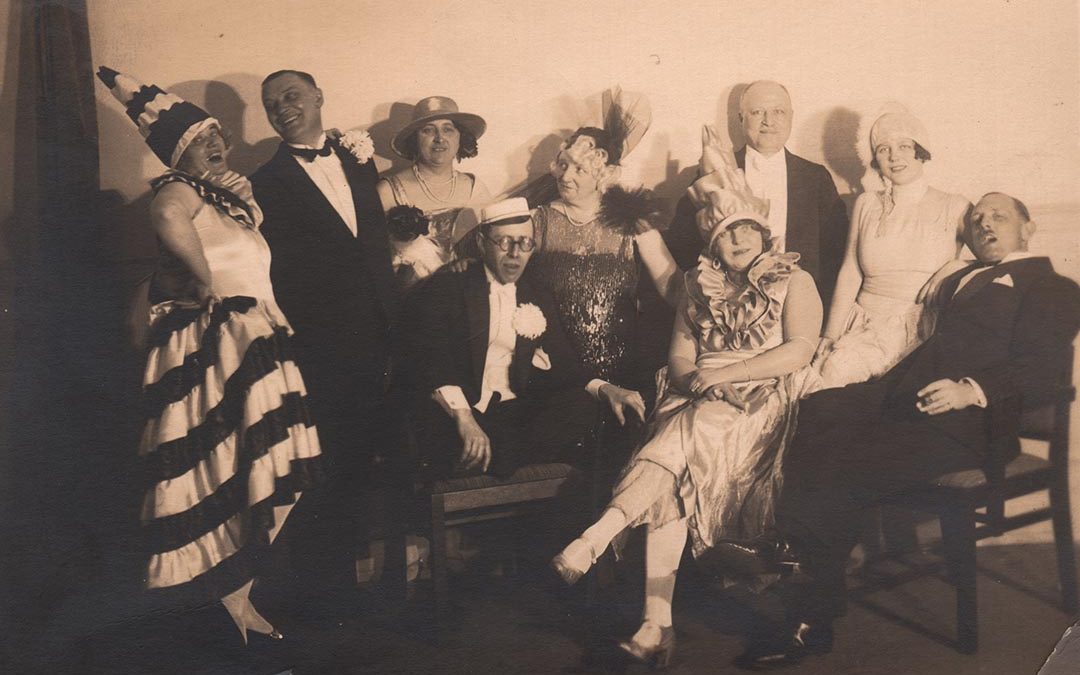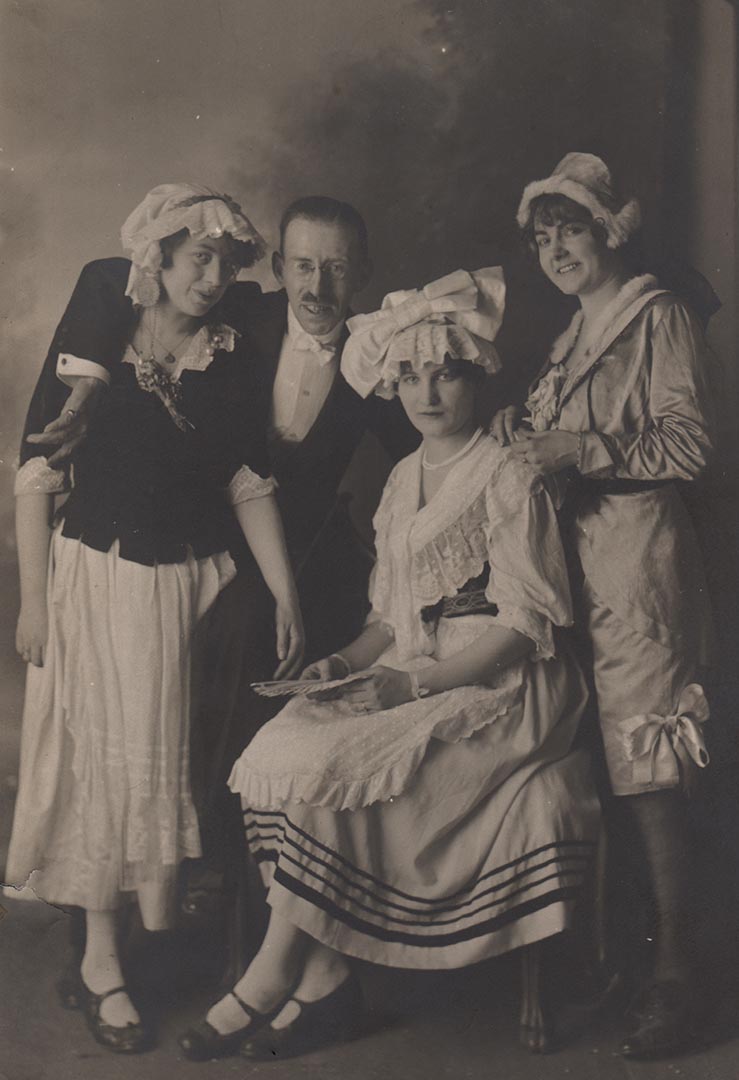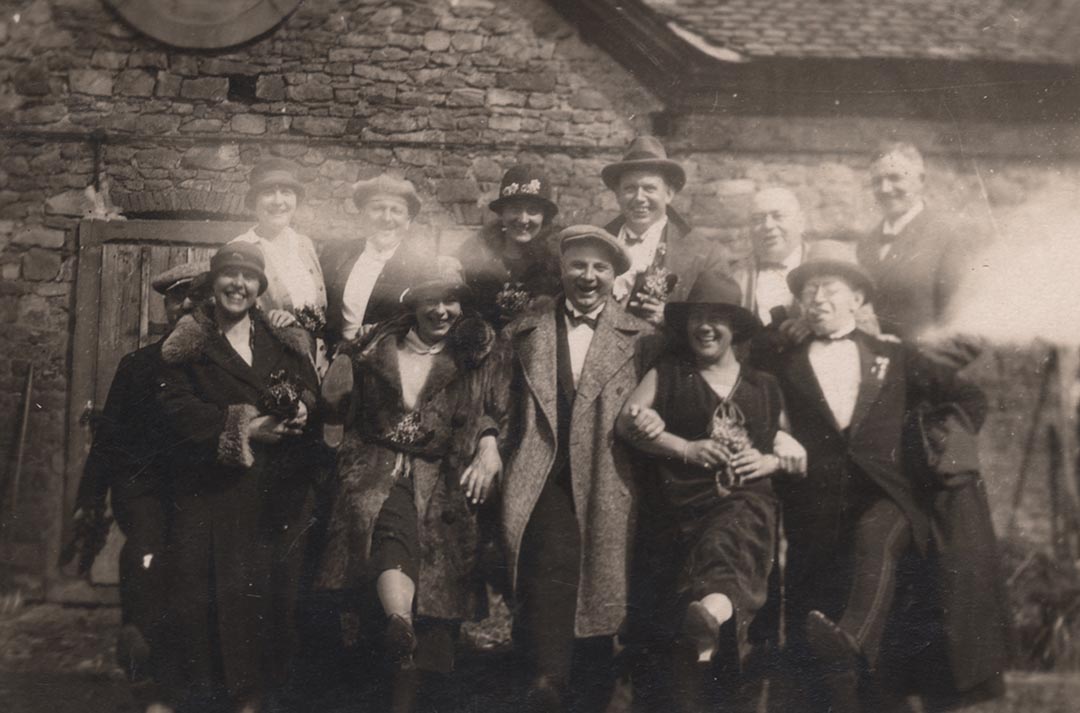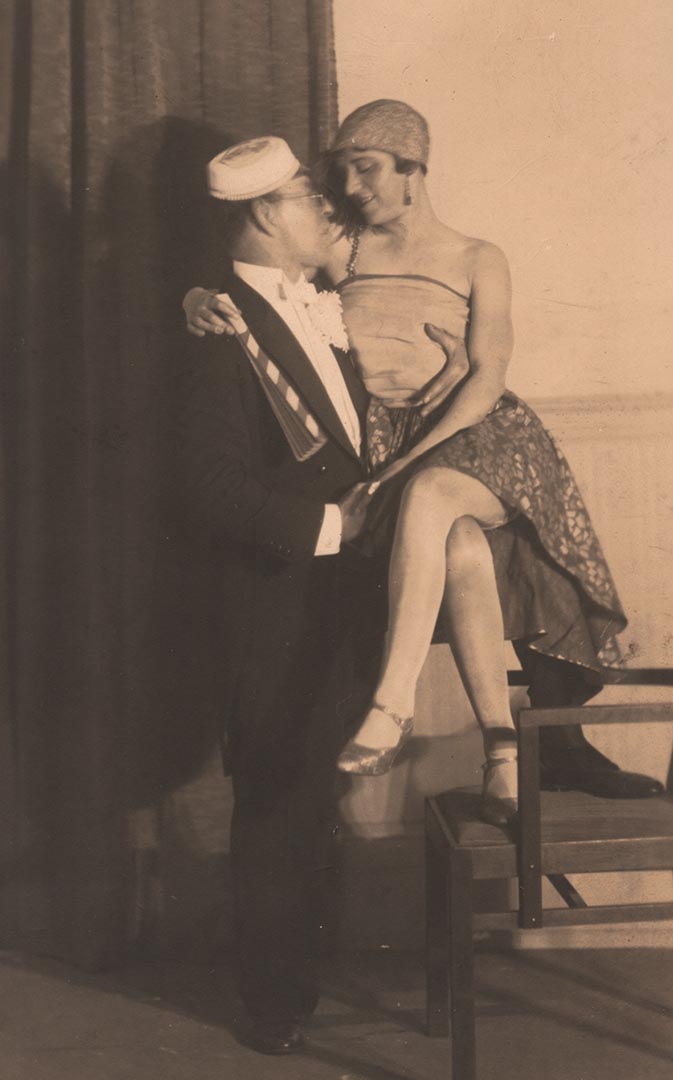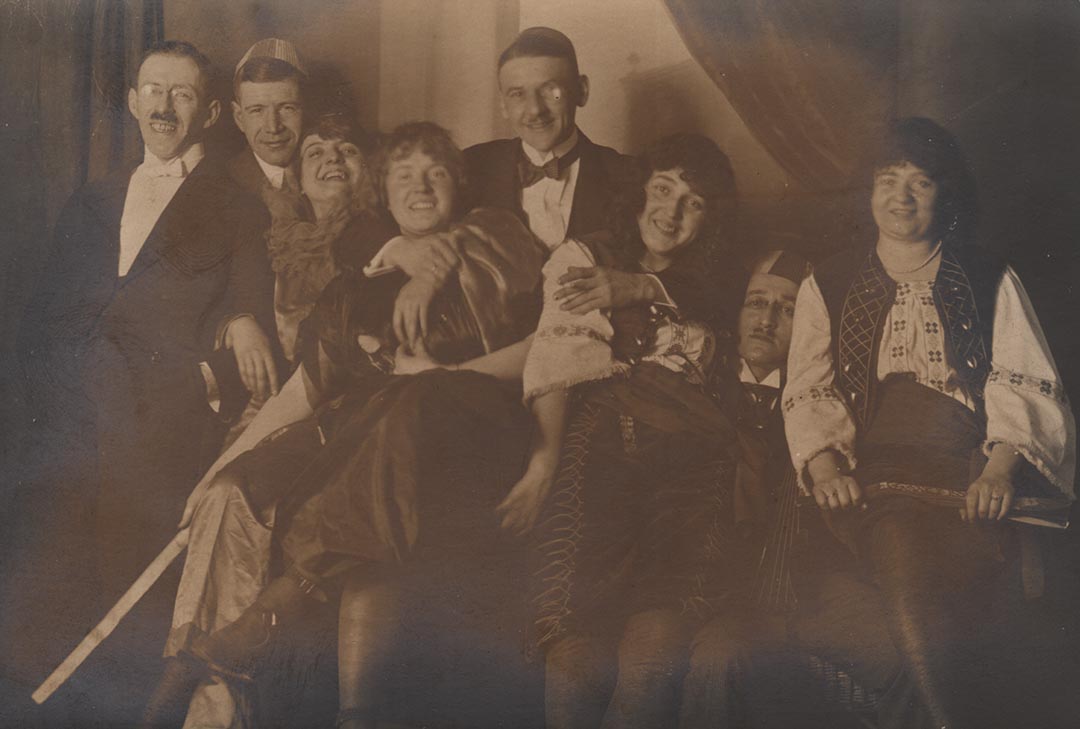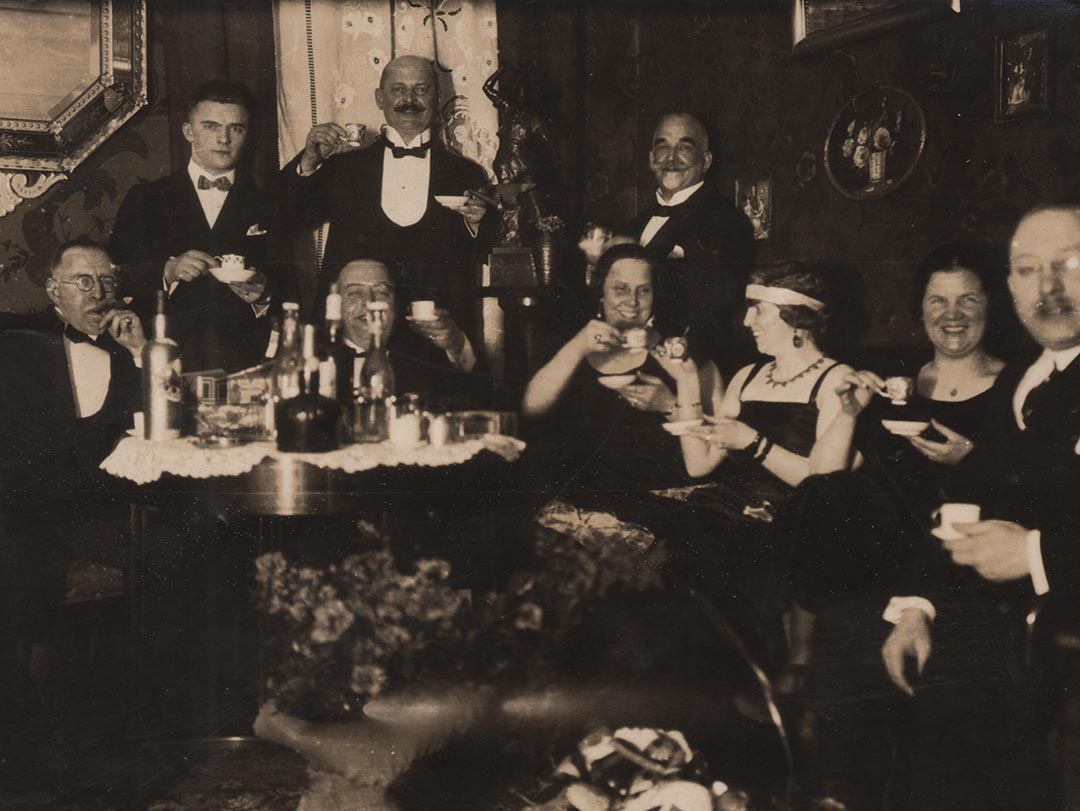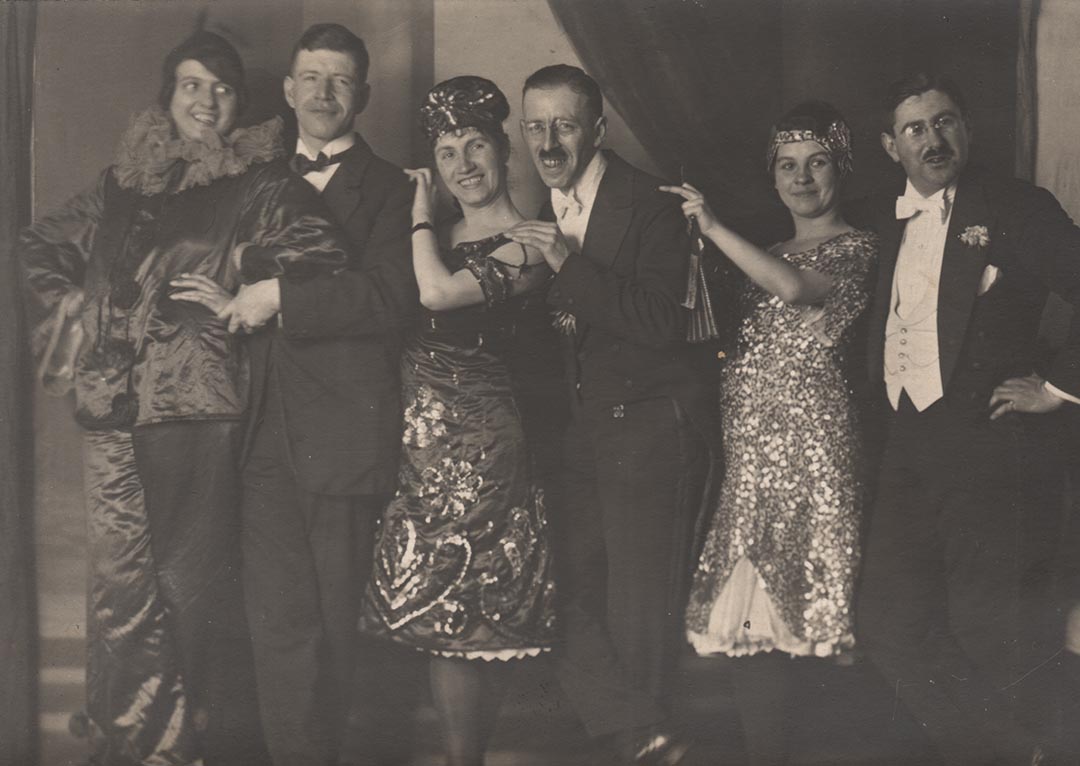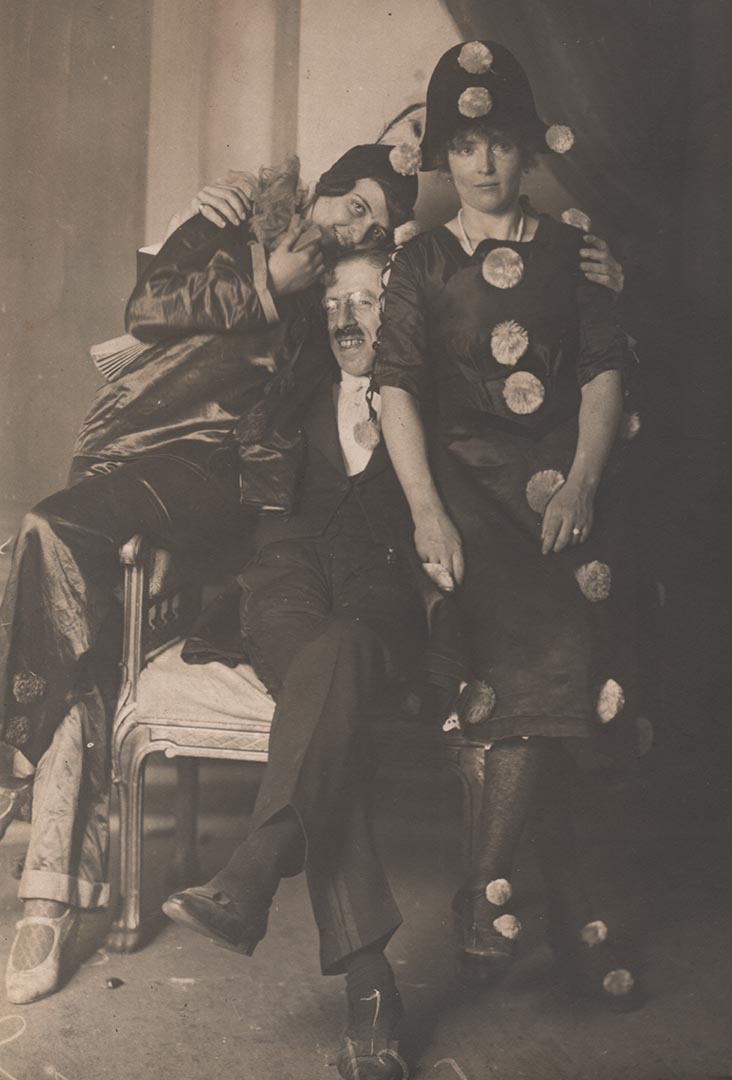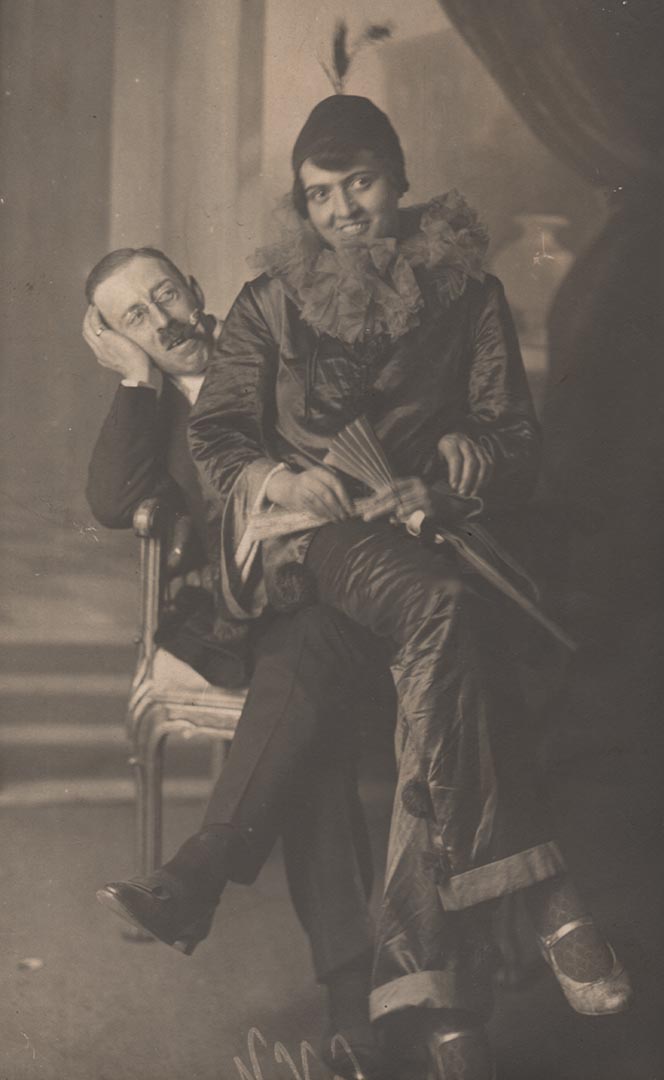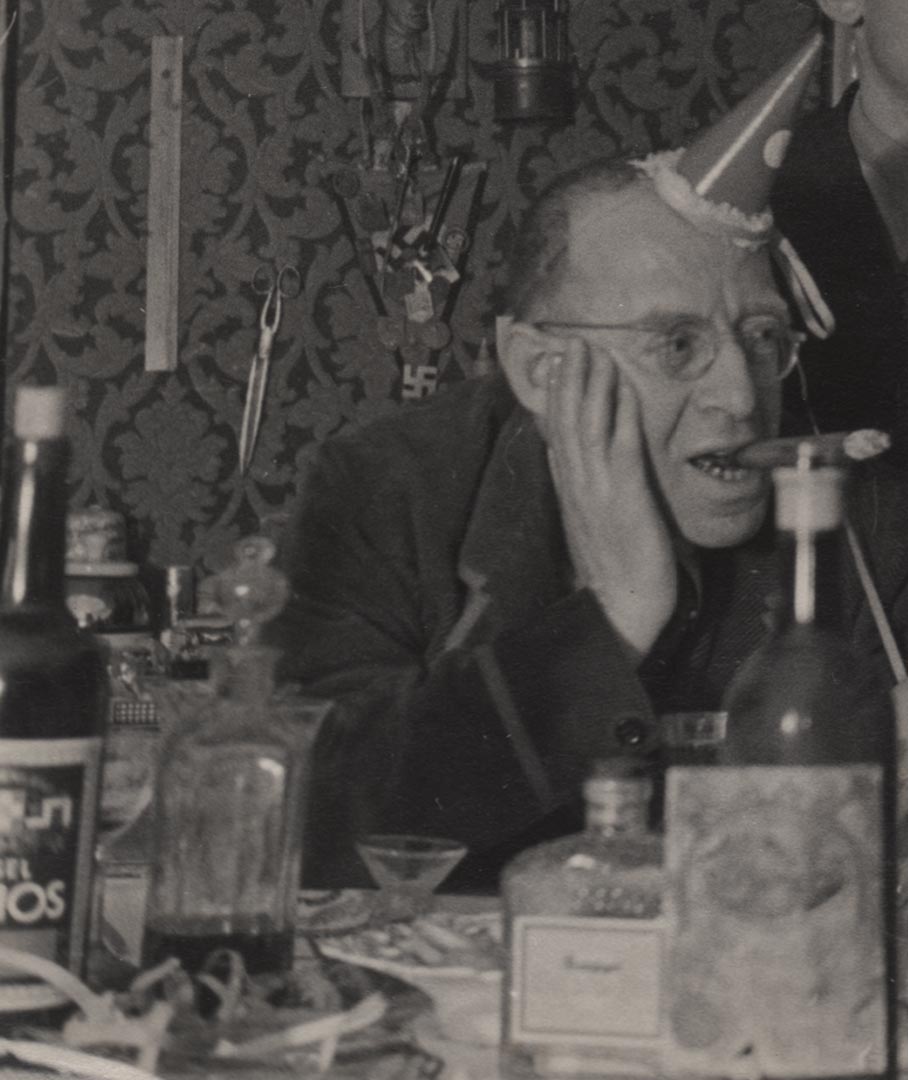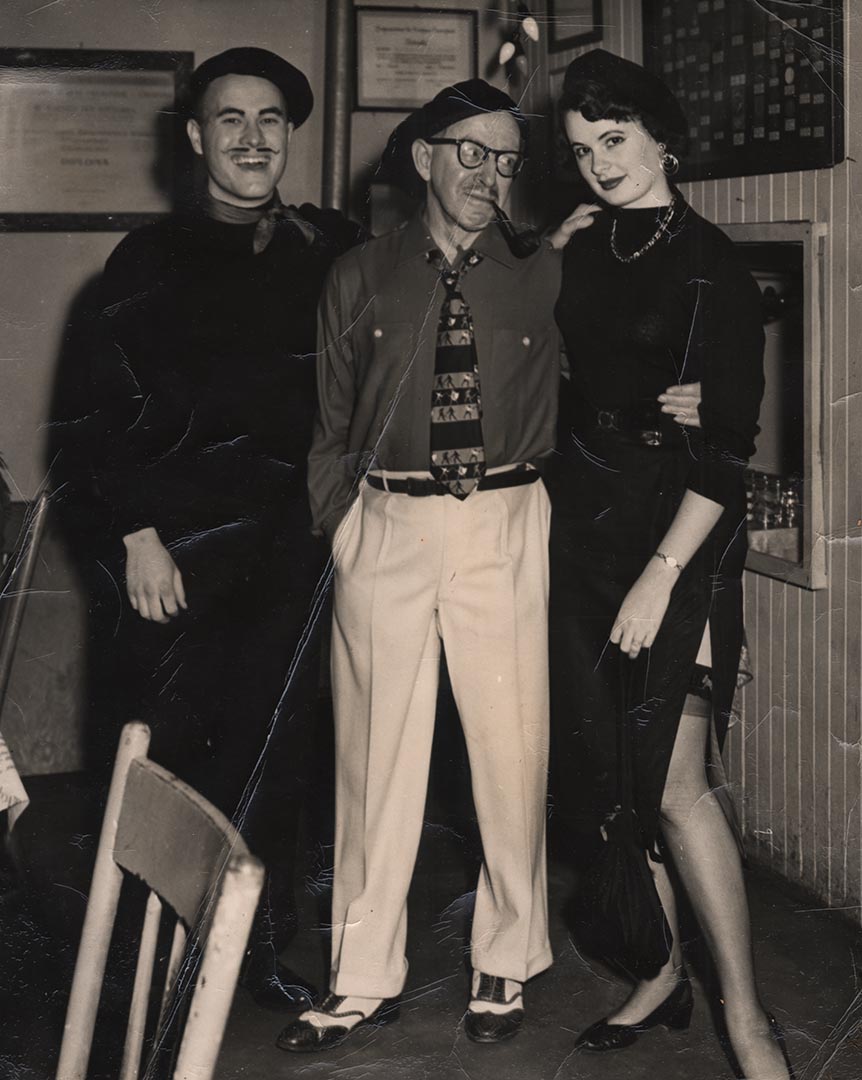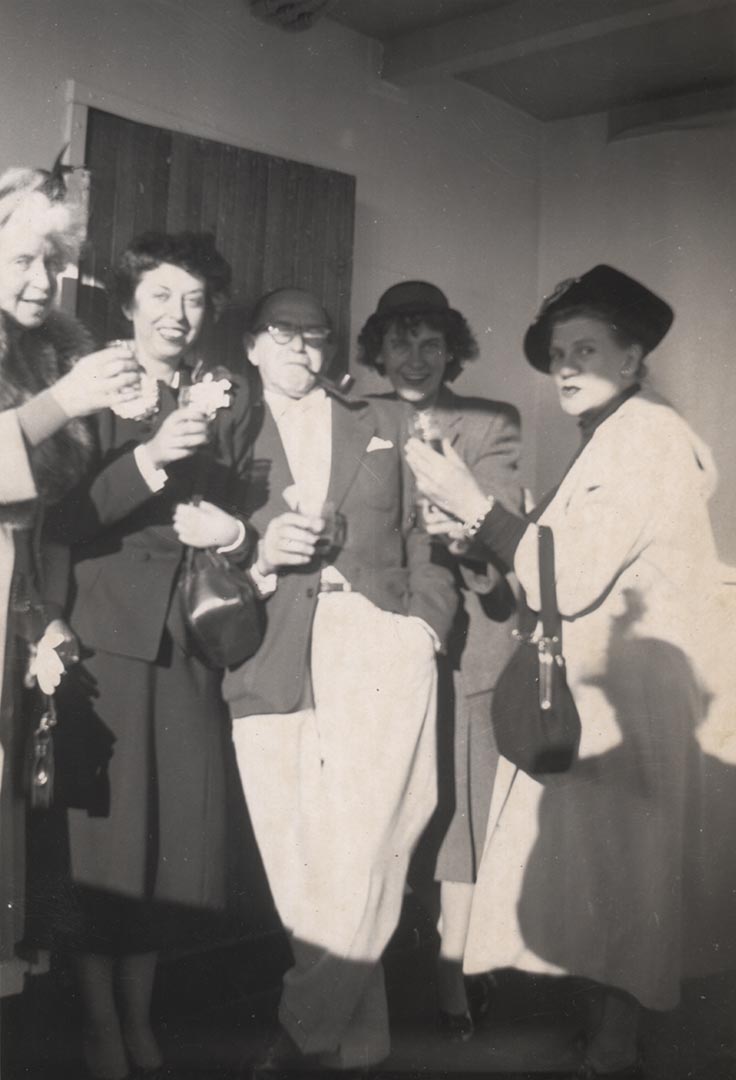Of the 13 million Germans mobilized for the First World War, over half were killed, wounded or taken prisoner. Hans Halberstadt and other survivors jumped into the Roaring Twenties with gusto. A decorated war hero, Hans came back home to Offenbach en Main and the family’s very successful leather goods business as a man of leisure. Years later, he would boast to his students in San Francisco that he had kept fencing gear in lockers at all the best fencing clubs in Europe so that he needn’t take equipment with him when he traveled for competitions. In looking over the photos I’ve selected to share today from the Archive’s large collection of Hans Halberstadt ephemera, it’s really not hard to believe. Hans and his friends had fine clothes, the best drink, hired photographers, and dressed in costumes just to add another level of frivolity. The seriousness of the war years behind them, they partied like rock stars.
In none of these photos do I recognize any other fencers, and I’ve gotten pretty adept at recognizing several of his teammates. Hans either kept his worlds separate, the fencers didn’t have the means to keep up with him, or his salle-mates were camera shy. Impossible to know of course but it seems clear that Hans ran in a fast circle. And maybe he was the wild man off the piste and showed up to tournaments hung over when ultimately taking second place to Erwin Casmir, as Hans did at every German championship for nearly a decade. (In fact, Casmir was just that much better than Hans and all but a handful of fencers on the international scene.)
These photos mostly come from what I lovingly refer to as the “Hans Box”. (See the story here.) In short, the box sat unopened for several decades in the possession of Charles Selberg and was full of Hans Halberstadt family photos, personal photos – many of girlfriends, if I was to guess – and scads of people I can’t identify. Among them were a whole bunch of photos like the below. Party pictures. Hans and his cronies working hard to secure the reputation of the 1920s as a hedonistic and unrestrained period between war and depression, then war again. If they felt it all coming their way, it doesn’t show.
I was prompted to put together this post after sharing a lovely meal with the venerable fencing entrepreneur and master, John McDougall. His collection of fencing memorabilia came to the Archive sometime near the beginning and he recently ran across a few items that were uncovered during a deep clean of his digs. Among them, three of the photos you’ll find below. All three, Hans party pics. Combined with several of the party photos from The Hans Box and it creates a pretty interesting picture of what exactly Hans was up to in his years after the war. He fenced, traveled, competed at the Olympics – and partied.
There’s not a whole lot to say about the individual photos. They speak for themselves, seems to me. I’ve got a few notes to add as you’ll see. Here’s the first batch.
Hans Halberstadt among the ladies.
Hans, front row far right, literally kicks up his heels.
Draw your own conclusions on this one.
Hans, far left, didn’t seem to go in for costumes so much but he sure was a snappy dresser. I wonder if that tux has tails?
Hans again on the far left with his most constant companion, a cigar.
These next three all contain one party goer who’s outfit makes her recognizable, inasmuch as I can tell it’s the same woman. No idea who she was, or what she may have been to Hans. Since she can been seen in the same costume in all three photographs, it seems fair to assume they were all taken at the same party.
This seems less costume party and more fancy dress party, although the woman we’ll see in the next two photos, here to be seen on the far left, is sporting a frill and cloth buttons that almost make her outfit clown-like. Of course, that might be a description she would have taken offense to, and I’ll make no claim to the eye of a Michael Kors to be critiquing anyone’s sense of style.
…although with this photo maybe my clown interpretation hits a little closer to home than not. Hans appears to be in his element here. The recognizable woman above on the left again.
And here it’s just the two of them. Friend? Paramour? An acquaintance made that very day? Who knows?
Whatever the fun, however long it lasted, it eventually came crashing down for Hans and his life in Germany. The next photo, knowing the fate that was around the corner for Hans and so many Germans, always takes my breath away. Take a look and I’ll explain.
Hans is a little older here and while the party is still going on, the shadow of things to come is literally hanging over his shoulder. I don’t know the symbolism of the ruler or the scissors, but the swastika hanging on the wall speaks volumes. According to the version of Hans’ story that I’ve heard most, he was awakened in the middle of the night by the gestapo and taken to the Buchenwald concentration camp. Hans claimed not to have known that he had Jewish heritage until the Nazis told him on the night he was taken. Somehow, either through money, connections through fencing or the Olympics, his record as a war hero or sheer luck, Hans was only held for a short time. The year he was taken, then released, is not known, nor how he made his way to Rotterdam to board the ship that would take him to New York in December of 1939. That he had a chance to get out with some of this possessions is evidenced by the photographs, medals and trophies that still grace the walls of the Halberstadt Fencers Club in San Francisco, and the memorabilia in this Archive that were preserved by Charlie Selberg and John McDougall after Hans passed away in 1966. The medals and trophies are mostly of bronze. No gold or silver escaped the hands of the Nazis.
Whatever lessons Hans learned as an inveterate partier of the Roaring Twenties, he carried the traditions forward into his long life in San Francisco. He was known to keep a few bottles of cordials near to hand for aprés fencing at his home/salle, and his wine cellar was, by all accounts, impressive in both size and quality. In fact, when Hans predeceased his brother and sister, who also lived out their lives in San Francisco, the family only lay claim to the contents of the wine cellar and left all the fencing memorabilia for John and Charlie to sort out. But before all of that, Hans did his level best to carry on as he had.
Costume parties were a popular and regular event at the Halberstadt club. And while Hans, seen here in the center, is sporting a fencing-themed tie that I’d love to have, I believe I envy him the shoes even more.
Later in life, perhaps, but still surrounded by the ladies.
I’ll end with this one. Hans as Master of Ceremonies in top hat, white tie and tails. Without a doubt, he’s the center of attention.

